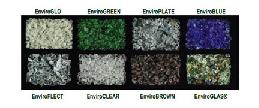
Eco Factor: Research aims at technology that will produce hydrogen from solar power and produces water instead of carbon emissions.
Materials science and engineering assistant professor Dane Morgan and Ph.D. student Edward (Ted) Holby are putting their efforts to bring solar powered cars that will emit water instead of carbon into reality. Through a model they have successfully shown that if the particle size of fuel cell catalyst is increased then the degradation can be reduced to a considerable amount. This will in return increase the life time of fuel cell. Morgan is researching in PEMFCs (proton exchange membrane fuel cells). The phenomenon is based on the splitting of hydrogen into proton and electron on the one side of the fuel cell. The electrons are used as a source of electricity while remaining components combine with oxygen to form water.
What the scientists are looking to improve is the life time of the fuel cell. Presently, the catalyst used to boost the reaction between electron, proton and oxygen is platinum particles as small as two nanometers. However, this small size catalyst is not capable of bearing a long reaction time and deteriorates quickly decreasing the lifetime of fuel cells. Attending to this problem, scientists have found that if particle size of a platinum catalyst is increased to four or five nanometers, which is approximately 20 atoms across, the level of degradation significantly decreases. Further, research aims at creating platinum alloys to reduce the platinum consumption making the production of full cells less expensive. To begin with, Morgan has started his study on models to observe some of the platinum alloys such as copper- platinum and cobalt-platinum catalysts.
Via: AazoCleanTech




